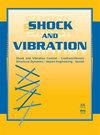基于 CFD 和 FEA 耦合模型的航空发动机关机后瞬态温度和间隙模拟
IF 1.2
4区 工程技术
Q3 ACOUSTICS
引用次数: 0
摘要
理解热浸泡现象至关重要,它可能导致停机后温度显著升高,然后逐渐降低。这可能会给发动机带来潜在风险,包括机油结焦。发动机部件的温度变化决定了停机后的间隙,而启动策略主要基于此。建议采用计算流体动力学(CFD)和有限元分析(FEA)耦合模型的模拟策略来研究停机后的瞬态温度和间隙。模拟结果与实验数据之间的最大温度偏差小于 6%。包括从 CFD 结果中获得的速度和质量流量在内的流动参数被用作有限元分析模型的边界。根据有限元分析模型,还进行了停机后 20 小时的瞬态温度计算。结果表明,有限元分析模型与 CFD 模拟结果具有良好的一致性,最大偏差小于 5%,仅占模拟时间的 0.2%。发动机关闭后,由于冷却条件较好且热容量相对较小,定子的温度变化率快于转子。因此,密封间隙在停机后的初期会增大,然后减小到最小值。高压涡轮密封位置的非尺寸最小间隙可达冷态值的 0.8 倍。本文章由计算机程序翻译,如有差异,请以英文原文为准。
Simulation of Transient Temperature and Clearance after Shutdown of Aeroengine Based on CFD and FEA Coupled Models
It is crucial to comprehend the heat soak phenomenon, which may result in a significant temperature increase after the shutdown followed by a gradual decrease. This could bring potential risks for the engine including oil coking. The temperature change of engine components dictates the clearance after shutdown, while startup strategies are primarily based on this. A simulation strategy, utilizing computational fluid dynamics (CFD) and finite element analysis (FEA) coupled models, is suggested to investigate the transient temperature and clearance after shutdown. The maximum temperature deviation between the simulation result and experimental data are less than 6%. Flow parameters, including velocity and mass flow rate obtained from the CFD result, were applied as boundaries of the FEA model. Based on the FEA model, transient temperature calculations were also conducted for 20 hours after shutdown. The results indicate that the FEA model demonstrates good agreement with the CFD simulation, with a maximum deviation of less than 5% and at only 0.2% of the simulation time. After the engine shuts down, the stator’s temperature change rate is faster than that of the rotor due to better cooling conditions and relatively small heat capacity. Consequently, the seal clearance increases in the initial period after shutdown and then decreases to a minimum value. The nondimensional minimum clearance can be 0.8 times the cold state value at the location of the high-pressure turbine seal.
求助全文
通过发布文献求助,成功后即可免费获取论文全文。
去求助
来源期刊

Shock and Vibration
物理-工程:机械
CiteScore
3.40
自引率
6.20%
发文量
384
审稿时长
3 months
期刊介绍:
Shock and Vibration publishes papers on all aspects of shock and vibration, especially in relation to civil, mechanical and aerospace engineering applications, as well as transport, materials and geoscience. Papers may be theoretical or experimental, and either fundamental or highly applied.
 求助内容:
求助内容: 应助结果提醒方式:
应助结果提醒方式:


